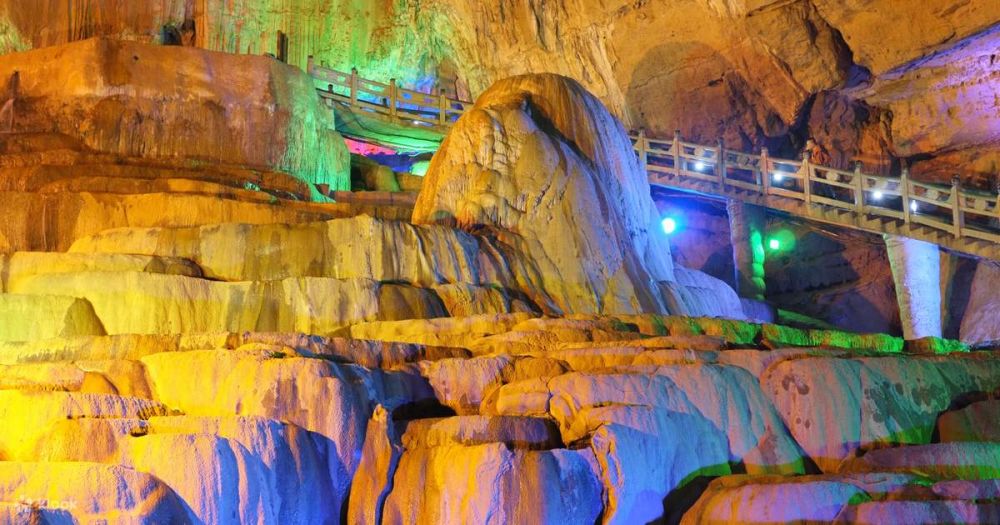

Jiuxiang Scenic Region, also known as the "Home of the Karst Caves," is one of the most breathtaking tourist destinations in Kunming, Yunnan Province, China. Its tourism history is deeply intertwined with the discovery and exploration of its extensive network of caves and gorges, which have enthralled visitors for generations.
The initial exploration of Jiuxiang Scenic Region began centuries ago, but it's the revelations from the 20th century that have marked the area as a significant tourist venue. The local Yi and Hui ethnic groups have known about these caves for generations, using them for various purposes, including spiritual ceremonies and shelter. It wasn't until the 1970s that these natural wonders started to gain wider recognition outside the local communities.
The formal development of Jiuxiang for tourism started in the late 20th century. Officially opened to the public in 1984, the region's stunning karst landscapes have captivated the public and scientists alike. Visitors were initially drawn to the area due to the mystery surrounding the caves, the unique subterranean landscapes, and the opportunity to delve into the heart of the earth.
The popularity of Jiuxiang Scenic Region surged after it was featured in various documentaries and travelogues, highlighting its ethereal beauty. Advancements in infrastructure, such as walkways and lighting within the caves, made the region more accessible to tourists, contributing to its growing status as a must-visit destination.
In recent years, tourism in Jiuxiang has been enhanced by the addition of modern amenities and guided tours, which provide insightful information about the geological and historical significance of the caves. Emphasizing sustainability, the local tourism authorities have implemented measures to preserve the natural environment while accommodating the influx of visitors.
Adventure Tourism: Recently, there's been a tendency towards adventure tourism in Jiuxiang, with tourists seeking thrilling experiences such as cave trekking and exploring lesser-known grottoes under expert guidance.
Eco-Tourism: With global environmental consciousness on the rise, eco-tourism has become increasingly popular. Visitors to Jiuxiang are keen on experiencing its natural beauty responsibly, ensuring minimal impact on the caves' ecosystems.
Cultural Exchange: Tourism in Jiuxiang isn't just about natural landscapes; there's also a significant interest in the local culture. Tourists are embracing opportunities to learn about the traditions and lifestyles of the Yi and Hui peoples.
As Jiuxiang Scenic Region continues to attract global interest, there is an ongoing effort to balance the needs of tourism with conservation. The future of tourism in Jiuxiang looks to incorporate immersive technologies, such as virtual reality tours, allowing broader access while preserving the fragile environment of the caves.
The evolution of tourism in Jiuxiang Scenic Region serves as a case study in the successful development of a natural site into a world-class tourist attraction while striving to uphold the ethics of sustainability and cultural integrity.